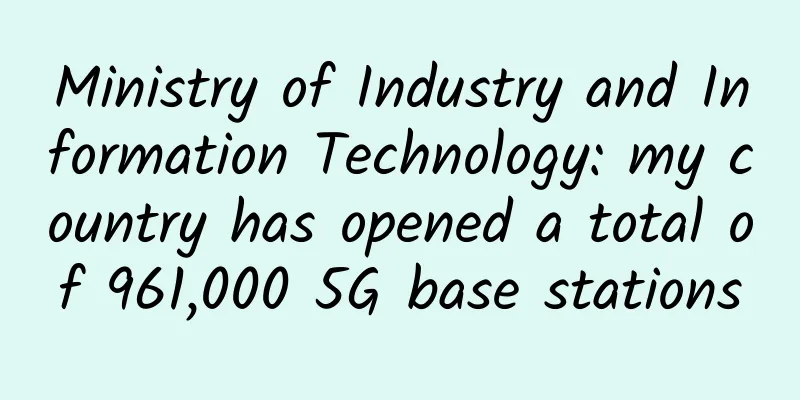Do you really understand API Gateway? This article explains the differences and integration between microservice gateway and enterprise application gateway

|
Software architecture is always evolving and iterating. In the 1990s, C/S architecture was very popular, and business system architecture was also a monolithic architecture. There was very little data interaction between systems. As the number of business systems in an enterprise increased, this would lead to data island problems. At this time, the demand for data interconnection and interoperability was very urgent. Remote transmission protocol formats based on HTTP and XML were widely adopted. The concept of SOA was first proposed by IBM in 2000, and it did solve the integration problems of many heterogeneous systems in enterprises.
In the Internet era, many companies have gradually adopted HTTP and JSON-based architecture styles to adapt to the flexible and ever-changing business needs of business systems. The centralized deployment problems of SOA architecture have been exposed, and microservice-based distributed architecture has become popular. As the core component of microservice architecture, API gateway serves as the unified entrance for all traffic. Upstream business systems do not need to worry about security and flow control, but only need to focus on business implementation. API gateway plays a key role in the overall enterprise architecture. It mainly enhances, guarantees, and controls the calls to backend microservices. It is transparent to all upstream business calls. API gateway needs to ensure that service calls are safe, efficient, and accurate. API gateways are mainly divided into two categories: one is the microservice gateway, which is closer to the business, and the other is the enterprise-level application gateway, which focuses on the flow control and security protection of service calls. The differences between them are mainly in the following aspects: 1. Different deployment locations The microservice gateway is mainly deployed in the intranet as a communication channel for the microservice internal API. Enterprise-level application gateways are generally deployed in the DMZ area or hidden behind a load balancer. 2. Different functional focuses The main functions of the microservice gateway are: service diversion, service automatic discovery and routing, service orchestration, customized development of business rules, service circuit breaking, and service grayscale release. The main functions of the enterprise-level application gateway are: global flow control, unified security authentication, performance support, load balancing, IP blacklist and whitelist, and security protection. 3. Different performance requirements The performance of the microservice gateway only needs to meet the concurrency requirements of the service. The performance of enterprise-level application gateways needs to focus on global traffic and concurrency support. 4. Different usage scenarios Microservice Gateway: Mainly focuses on the gateway call scenarios within microservices. Enterprise-level application gateway: It is mainly the entrance for north-south traffic. WeChat applets, cloud application calls, mobile APP calls, iPad platforms, and third-party partners all call services from the external network to the internal network. 5. Different architecture The microservice gateway is a basic component of the microservice architecture. Most Internet companies use Zuul's open source products. The architecture in the figure below uses Kong, which has better performance and stability, as the API gateway for microservices. The architecture is as follows: The enterprise-level application gateway is mainly a unified entrance for external traffic. It is generally deployed in a centralized manner and is also divided according to region and business field based on customer requirements to form an enterprise-level application gateway cluster. The architecture is as follows: Enterprise-level application gateways generally have very large concurrency, and require the product to be independent, not dependent on third parties, and have good performance. Many Internet-oriented industries choose Kong's open source products. The Kong community is active, with more than 20,000 stars on GitHub. Other products in the API gateway in CNCF are also very good. Domestic products include OpenResty, Orange, and the latest APISIX products, all of which have excellent performance, but stability remains to be verified. There are many products for microservice gateways, which are generally related to business needs and seamlessly integrated with registration service discovery products. The most commonly used products in the industry are Zuul and Spring Cloud Gateway. Since they are pure Java products, their performance is not as good as Kong products, so many Internet companies have carried out secondary transformation, such as games, e-commerce, lottery, etc. In order to meet the needs of high concurrency and large traffic, they will also transform Kong to meet the functions of microservice gateways. In the future, microservice gateways and enterprise-level application gateways will tend to merge, and integrated solutions will also bring many benefits.
There is no silver bullet in the software industry, and no architecture can cure all ills. However, ensuring the high availability and scalability of the API gateway requires more technical investment and technical support at the infrastructure level, so that technical personnel can better focus on realizing the integrated process of automated testing and building, continuous integration and delivery. |
<<: Xinhua Commentary: The "invisible threshold" for number portability should be removed
>>: How to configure basic IPv6 addresses? Learn in one minute
Recommend
SDN reshapes enterprise networks and changes the role of network managers
We have seen that many operators have significant...
Understanding WiFi 6 Features for Wave 1 and Wave 2
The rollout of Wi-Fi 6 will consist of two waves ...
Thoroughly understand computer network communication equipment and protocols
【51CTO.com original article】 Table of contents 1....
Servers are attacked for nothing? It’s because the high-defense system is not well-prepared
The development of cloud servers is unstoppable. ...
Development of Multi-core Fiber Connector Technology
Professor Ryo Nagase of Chiba Institute of Techno...
British Telecom announced that it will shut down its 3G network in 2023 and said it is not in a hurry to launch Open RAN
According to foreign media reports, British Telec...
Hang Seng Bank launches new generation digital financial infrastructure LIGHT
On October 24, the 2020 Hang Seng LIGHT Developer...
Huawei advocates jointly planning the certainty of industry development and moving into the 5.5G era
[Barcelona, Spain, March 1, 2023] The "Joi...
Wi-Fi encryption is useless. Is it not important to have no money, so just "run naked"?
Yes, you read that right. With the exposure of th...
UFOVPS limited edition 21% off, top up 200 yuan to get 10 yuan, US CN2/Japan CN2 GIA/Hong Kong CN2 GIA optional
UFOVPS is currently carrying out a spring promoti...
5G brings three values to promote intelligent mining
At present, under the long-term goal of carbon ne...
What is the 5G Open RAN Policy Alliance established by Microsoft, Google, Samsung and other giants?
According to foreign media reports, the Open RAN ...
Diagram | Why HTTP3.0 uses UDP protocol
This article is reprinted from the WeChat public ...
Megalayer: 20% off on Hong Kong Alibaba hybrid servers - E3-1230/8GB/240G SSD/10M omnidirectional + 10M Alibaba Cloud bandwidth starting from RMB 638/month
This month, Megalayer provides Hong Kong Alibaba ...
A complete picture of the 2021 annual report on network acquisitions
Throughout 2021, Cisco has been the biggest acqui...









